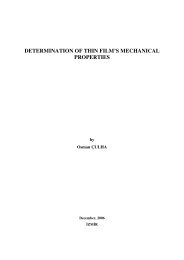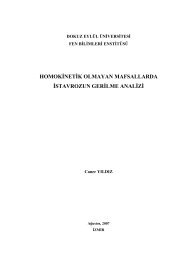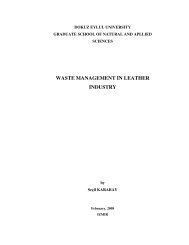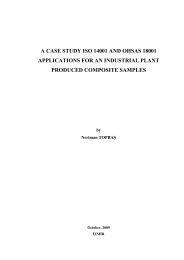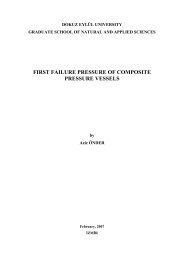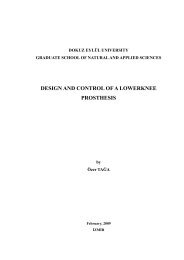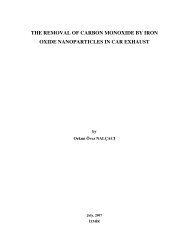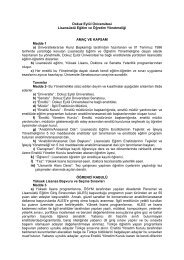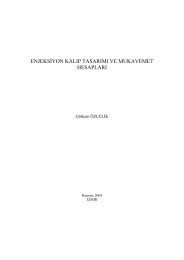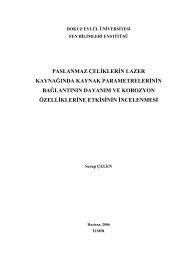DETERMINATION OF THIN FILM'S MECHANICAL PROPERTIES
DETERMINATION OF THIN FILM'S MECHANICAL PROPERTIES
DETERMINATION OF THIN FILM'S MECHANICAL PROPERTIES
You also want an ePaper? Increase the reach of your titles
YUMPU automatically turns print PDFs into web optimized ePapers that Google loves.
23<br />
23<br />
CHAPTER THREE<br />
<strong>MECHANICAL</strong> <strong>PROPERTIES</strong> <strong>OF</strong> MATERIALS<br />
3.1 Hardness Test<br />
Indentation tests, in many cases referred to as hardness tests, have for a long time<br />
been a standard method for material characterization. The hardness test consists of<br />
loading an indenter made of diamond or any other hard material (e.g., Tungsten<br />
Carbide) and pressing it into the surface of a softer material to be examined. The<br />
further into the material the indenter sinks (for a given load), the softer the material is<br />
and the lower its yield strength. Hardness is not an intrinsic material property<br />
dictated by precise definitions in terms of fundamental units of mass, length and<br />
time. A hardness property value is the result of a defined measurement procedure.<br />
Hardness tests are the most commonly used non-destructive testing procedures in the<br />
metal industry and in research because they provide an easy, inexpensive and reliable<br />
method of evaluating basic properties of developed or new materials. The hardness<br />
test indenter is so small that it scarcely damages the bulk material; therefore, it can<br />
be used for routine batch tests on small samples of materials to ascertain that they are<br />
up to specifications on yield without damaging them. The usual method to achieve a<br />
hardness value is to measure the depth or area of an indentation left by an indenter of<br />
a specific shape, with a specific force applied for a specific time. There are three<br />
principal standard test methods for expressing the relationship between hardness and<br />
the size of the impression, these being Vickers, Rockwell and Brinell (Ziheng Yao,<br />
2005).<br />
3.1.1 Vickers Hardness Test<br />
The Vickers indenter is a square based pyramid with an angle of 136 degrees<br />
between the faces and a ratio of diagonals of 1:1 (as shown in Figure 3.1). The<br />
Vickers hardness number is one of the most widely used measures of hardness in<br />
engineering and science. The Vickers diamond hardness, VDH, is calculated using





